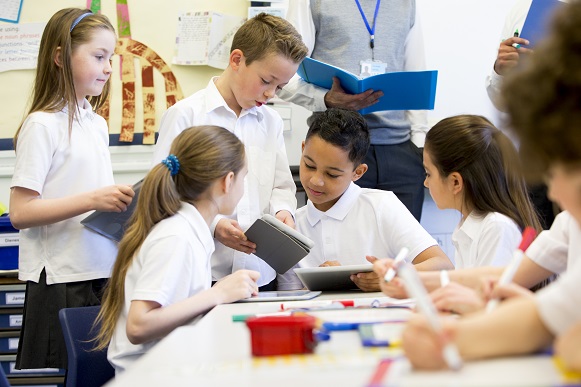Next Gen Navigator
Making Student Thinking Visible
Posted on 2020-04-08
Disclaimer: The views expressed in this blog post are those of the author(s) and do not necessarily reflect the official position of the National Science Teaching Association (NSTA).

When in a lesson or instructional sequence do you provide your students opportunities to make their thinking visible? Lab reports? Assessments?
When I was in the classroom, these were the most common ways students made their thinking visible to me. Well, lab reports, assessments, and the ubiquitous “side talking” of middle school students. How I wish I could go back and embrace—no, foster and encourage—the peer-to-peer and peer-to-group student discussions naturally happening in my classroom to support students’ sensemaking by allowing them to build on each other’s ideas!
Making thinking visible is as important in providing our students access to science literacy as engaging them in the three dimensions to figure out phenomena. For students, making thinking visible helps them
- see the gaps in their science ideas (for example, when developing an initial model of a phenomenon, students realize they can’t explain what they’ve observed), which creates the need to engage in the next lesson;
- build on each other’s ideas (through building understanding or consensus discussions, for example) to develop a deep conceptual understanding of science ideas and communicate those ideas with increasing sophistication over time; and
- create a record of their learning (returning to and revising their models or explanations for the phenomenon throughout the instructional sequence).
The Student Ideas “Less Like, More Like” table from the Next Generation Science Standards (NGSS) Lesson Screener (Criterion E) offers guidance for shifting toward teaching and learning that values and leverages student thinking.

What resonates with you as you analyze and interpret this table? In this issue, our guest authors will share their “aha” moments in shifting their lessons toward the “more like” side of the table and offer strategies you can use to get started or continue your shift toward making your students’ thinking visible.

Kate Soriano
Next Gen Navigator Guest Editor
Kate Soriano began her career as a geologist for the EPA’s Superfund program. Her work explaining science to affected communities made her realize that many people did not have access to a high-quality science education, and she wanted to change that. Soriano now has more than 20 years of experience teaching K–12 students science in both formal and informal educational settings. Currently, she is supporting teachers in their transition toward the NGSS. Soriano is a NSTA NGSS Professional Learning Facilitator and Instructional Coach. She also serves on the EQuIP Peer Review Panel for Science. She holds a bachelor of science degree in geology and geophysics from Boston College, a master of science in geology from the University of Wisconsin–Madison, and a master of arts in education from Humboldt State University.
Making Students’ Thinking Visible Through Discussion
Fourth-grade science teacher Dana McCusker and Marissa Miller, assistant director of science at Mastery Charter Schools, share how they get students to make their thinking visible through discussion. Read more >>>
Going Public: Revealing Student Thinking in Science
Veteran science educator Missy Holzer discusses the need for all students to “go public” when making sense of phenomena—revealing their thinking, their models, and their ideas. Read more >>>
What Does It Really Take to Get High School Students to Make Their Ideas Visible?
Often high school students are reluctant to share what they really think about what causes a natural or designed phenomenon. Arizona science teachers Angie Berk and Jen MacCall, and Kristen Moorhead, a consultant for Professional Learning Innovations, have discovered it takes intentionally listening to who really is or isn’t talking and strategic effort by the teacher to shift the culture from some students sharing ideas some times to all students revealing their thinking. Read more >>>
Inquiry Three-Dimensional Learning


